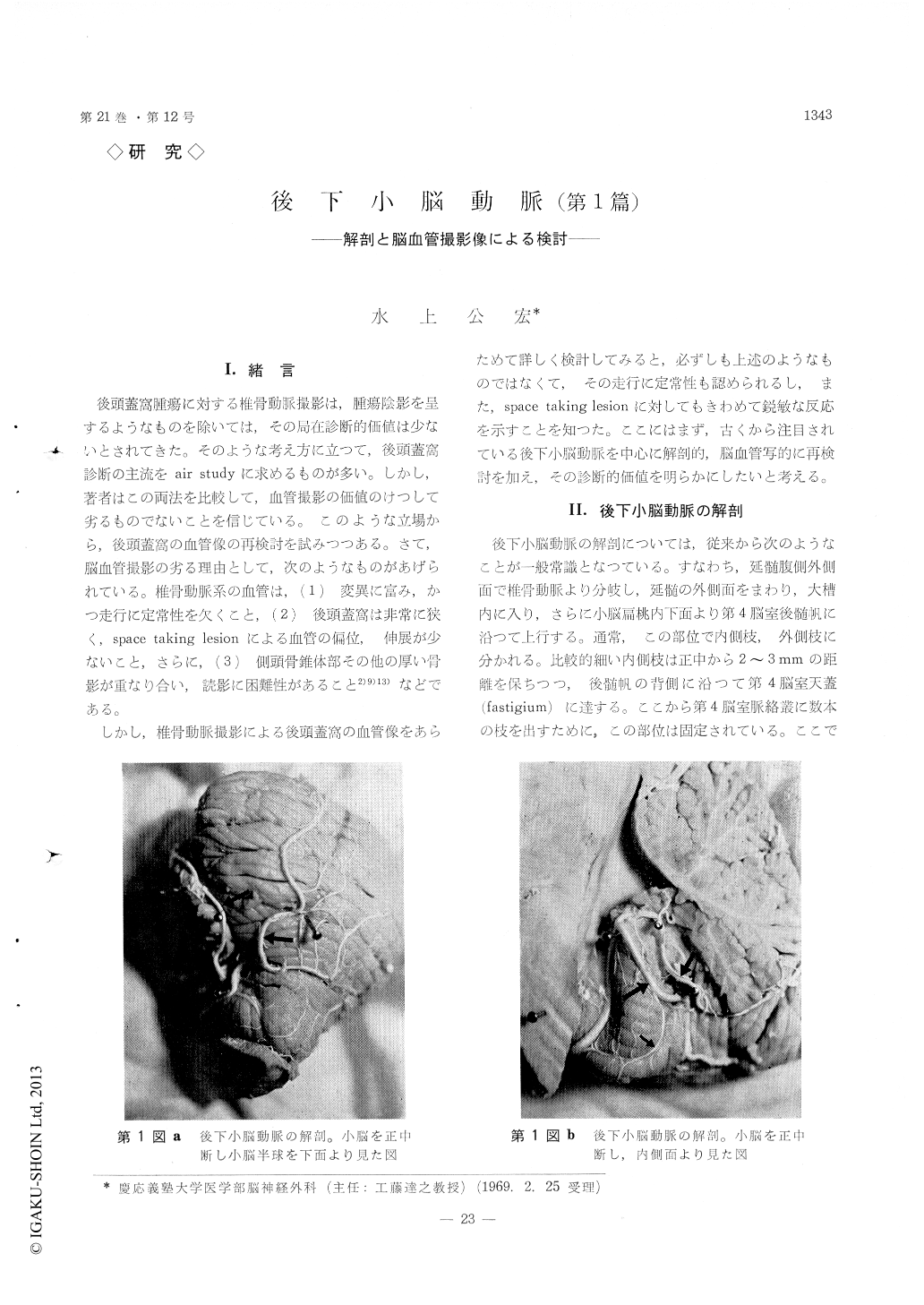Japanese
English
- 有料閲覧
- Abstract 文献概要
- 1ページ目 Look Inside
I.緒言
後頭蓋窩腫瘍に対する椎骨動脈撮影は,腫瘍陰影を呈するようなものを除いては,その局在診断的価値は少ないとされてきた。そのような考え方に立つて,後頭蓋窩診断の主流をair studyに求めるものが多い。しかし,著者はこの両法を比較して,血管撮影の価値のけつして劣るものでないことを信じている。このような立場から,後頭蓋窩の血管像の再検討を試みつつある。さて,脳血管撮影の劣る理由として,次のようなものがあげられている。椎骨動脈系の血管は,(1)変異に富み,かつ走行に定常性を欠くこと,(2)後頭蓋窩は非常に狭く,space taking lesionによる血管の偏位,伸展が少ないこと,さらに,(3)側頭骨錐体部その他の厚い骨影が重なり合い,読影に困難性があること2)9)13)などである。
しかし,椎骨動脈撮影による後頭蓋窩の血管像をあらためて詳しく検計してみると,必ずしも上述のようなものではなくて,その走行に定常性も認められるし,また,space taking lesionに対してもきわめて鋭敏な反応を示すことを知つた。ここにはまず,古くから注目されている後下小脳動脈を中心に解剖的,脳血管写的に再検討を加え,その診断的価値を明らかにしたいと考える。
Vertebral angiography has been considered to be of little diagnostic value in the localization of post-erior fossa tumors. Pneumoventriculography is there-fore generally accepted to be of great importance.
The variations in the course of the vessels in the posterior fossa and their correlative relationship to the adjacent structures were studied at autopsy by dissection and at vertebral angiography.
Despite numerous variations, the posterior inferior cerebellar artery is easily identified on angiograms and its course is intimately related to the adjacent structures such as medulla, tonsil, aqueduct, post-erior aspects of fourth ventricle and inferior vermis.
In this series, the artery is clearly distinctive with high percentage, i. e. 96% at autopsy materials and 88% at retrospective interpretation of the vertebral angiograms respectively. The bifurcation of the medial and the lateral branches of the posterior -in-ferior cerebellar artery and the turning point of the -medial branch located beneath the fastigium are verified to be almost on midline in this study. The "bifurcation" and the "turning point" therefore have significant value to analye the posterior fossa space taking lesions.
Displacements and deformities of this artery are interpreted in terms of the typical configurations and is of considerable importance in the recognition and localization of space taking lesion including inter-pretations of other vessels.

Copyright © 1969, Igaku-Shoin Ltd. All rights reserved.


